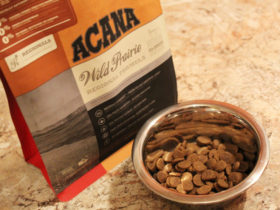Repair of wooden doors for some time now is a very popular way to reanimate the carpentry. You can change them at one point, but perhaps the tree is still in excellent condition? Then it is worth restoring the doors, because you yourself, without any help, can breathe a new life into this «antiques».
Prepare the canvas for repair
Short guidance for restoration of the canvas
The restoration of natural wood canvases is quite justified. It’s a pity to throw them away, and buying exactly the same new ones will cost ten times more expensive. But do not think that there will be no “fuss” with the new door — you will need to put loops, pens, putty, paint or varnish. Not very damaged canvases can be very easy to refresh: to rummage the surface and open it with varnish or paint. But naturally, it is best to make out the “neglected” option.
The following tools and materials will be needed for repair:
construction hair dryer (professional or for home use);
protective glasses;
hammer;
chisel;
narrow and wide steel spatula;
brushes for paint or varnish;
sets of large and small sandpaper;
lobby;
knife,
pliers;
a sealant syringe (if there are glass inserts);
primer for carpentry;
masking adhesive tape (if there are glass inserts);
Starting and finish wood putty;
paint or varnish for wood;
Skags and nails 20 mm long (if there are glass inserts).
Restoration of wooden doors — Remove the paint with a quick way
We decorate the old door
First you need to find out where exactly you will carry out work. If the apartment has global repair, then you can restore in any room. In the case when nothing is foreseen, it is better to wait for the warm season and work either in the kitchen, or, if possible, stretch the wire to the street, highlight the angle in the garage or in the country. Removing the paint with a hairdryer — the lesson is quite dusty and smelly, and at least you will need to open all windows in the house.
So we remove the doors. The canvas covered with paint in several layers will most likely be stuck with difficulty, but you need to remove it as accurately so as not to damage it, otherwise you will add work for yourself — you will need to put dents and chips. Dismantle loops, handles, lock and put the canvas on a horizontal surface.
We put the heating of the construction hairdryer to a position in which it will quickly warm up the paint, and a narrow spatula, a centimeter by a centimeter, we begin to remove the old swollen material.
Important: be sure to put on the goggles, do not touch your hands to the heated surface and do not direct a stream of hot air to the blade of a spatula.
If the hair dryer overheat, it can break (a spiral or engine will burn out). Therefore, follow the following mode: we work for 10 minutes, we walk 5 minutes. You can not scratch the door with a spatula, because you can very easily raise and disrupt the upper fibers. In the same way, carefully should work in complex narrow and curly areas, as well as the ends. If there are small islands of the paint — it’s okay. Then they can be removed with sandpaper.
Wise technology or the most difficult in restoration
One of the most time -consuming stages occurs — primary grinding. If your door is even, an ideal option would be to use a grinder. It is even better if the design is provided with a vacuum cleaner. If the door is phylene — you can’t do without manual labor. First you can apply rough sandpaper, and then go through a smaller one again.
After work, shake off the remnants of dust with a dry brush and primed the canvas. You will immediately see all the defects that will be eliminated. After the impregnation is completely dry, you can proceed to putty. If you plan to paint, it is better to apply white putty, and if you varnish, then you need to choose the material for the color of the tree. Coarse -grained putty should be filled with all significant defects and derive geometry. After a day, we go out the door. It is necessary to clean strictly in the direction of the fibers so that there are no irregularities left.
With a brush we sweep putty dust and so primer. After applying the finish putty, we are waiting for its drying, we skk and primer. In principle, after that you can already apply paint or varnish, but it is still better to carefully examine the surface for defects, and, if any, repeat the operation with the finish. However, under the varnish, minor flaws will not be as visible as under the paint, so you yourself decide whether it is possible to allow a certain “hack”.
The finish coating varnishes consists of several stages. First, a primer layer of varnish diluted with a solvent is applied. After drying, the surface will squeeze a very fine sandpaper, cleaned of dust. The second time the varnish is no longer diluted. When applying, it is important to avoid fluxes and hits the brush and debris door. We clean again. For the third time, dilute the varnish at the rate of 50 g of the solvent per 1 liter. The technology of paint coating is practically no different.
The repair is completed, it remains only in the same way to restore the lollips and platbands, which, however, can be changed if they do not represent any value.













Оставить коммент.